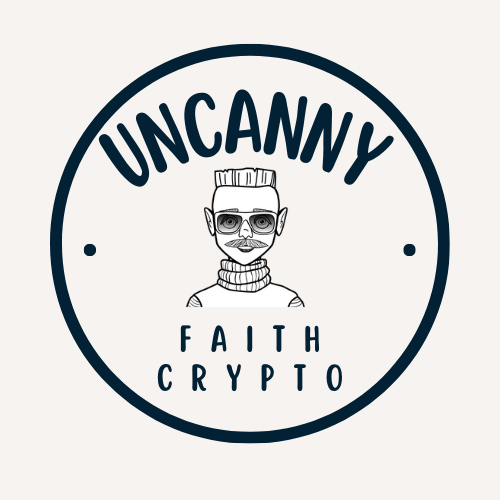Decentralized Finance (DeFi): A Transformative Force in 2025
The concept of Decentralized Finance (DeFi) has been reshaping the foundations of traditional financial systems in recent years. With rapid advancements in blockchain technology and cryptocurrencies, the world of finance has entered an era of decentralization—an era that remains both captivating and, at times, complex. As we move into 2025, one crucial question emerges: why is DeFi becoming increasingly important in our evolving global economy?
In this article, we’ll explore the depth of Decentralized Finance, examining its potential, challenges, and why it continues to be a major topic of discussion today. Let’s unravel these layers together as we look ahead to 2025.
Outline
Introduction
- H1: Understanding the Revolution: What is Decentralized Finance (DeFi)?
- H2: A Brief History of Financial Systems Leading to Decentralization
Core Features of DeFi
- Key Components of Decentralized Finance
- Decentralized Applications (dApps)
- Smart Contracts: The Backbone of DeFi
- Liquidity Pools and Automated Market Makers (AMMs)
- How DeFi Differs from Traditional Finance (TradFi)
Why DeFi Matters in 2025
- The Need for Financial Inclusion
- Escaping Centralized Limitations: Trust and Transparency
- Reduced Costs and Greater Efficiency
- Evolving Regulatory Landscape: Challenges vs. Opportunities
Use Cases of DeFi in 2025
- Lending and Borrowing Without Middlemen
- Yield Farming and Staking: Earning Passive Income
- Tokenized Assets and Real-World Asset (RWA) Integration
- Decentralized Exchanges (DEXs) and Cross-Border Transactions
Risks and Challenges of DeFi
- Security Concerns: Exploits, Hacks, and Vulnerabilities
- User Experience: A Barrier for Mass Adoption
- Regulatory Uncertainty and Compliance Issues
- Volatility of Crypto Markets
The Future of DeFi
- Interoperability: Bridging Blockchains
- Decentralized Identity (DID) and Privacy Innovations
- Role of Institutions in DeFi Ecosystems
Conclusion
- Final Thoughts: DeFi as a Paradigm Shift in 2025
Understanding the Revolution: What is Decentralized Finance (DeFi)?
Imagine a world where you don’t need banks to hold your money, intermediaries to lend or borrow funds, or brokers to trade assets. This is the promise of Decentralized Finance (DeFi)—a financial ecosystem built on blockchain technology rather than traditional financial institutions.
DeFi refers to a suite of blockchain-based applications that operate autonomously, allowing users to conduct financial transactions without the need for a central authority. Built on public blockchains like Ethereum, Solana, and Binance Smart Chain, DeFi makes financial services accessible to anyone, anywhere, as long as they have an internet connection.
But where did this revolution begin, and why is it surging into the spotlight in 2025? To answer that, we need to understand the history of financial systems and how they have evolved toward decentralization.
A Brief History of Financial Systems Leading to Decentralization
Historically, financial systems have been centralized. Banks, governments, and financial intermediaries control the flow of money and act as the gatekeepers of trust. While centralization has provided security and standardization, it has also resulted in high fees, limited access, and rigid regulations.
The global financial crisis of 2008 was a wake-up call, exposing the fragility of centralized systems and prompting a reassessment of the trust placed in traditional institutions. Enter Bitcoin in 2009—a decentralized digital currency without a central authority, which sparked the idea of financial systems operating independently.
Fast forward to 2025, and DeFi represents the next evolutionary step—a manifestation of blockchain technology transforming not just currency, but the entire financial landscape.
Key Components of Decentralized Finance
DeFi is not a single product or service but a broad ecosystem made up of various tools, platforms, and operations. Below are its core components:
Decentralized Applications (dApps)
At the heart of DeFi are decentralized applications (dApps). These are software protocols running on blockchain networks that allow users to interact directly without intermediaries. Think of dApps as decentralized versions of services like Uber, where the protocol connects users directly without the need for a central authority.
Smart Contracts: The Backbone of DeFi
Smart contracts are self-executing agreements stored on the blockchain. They automate and enforce the rules of an agreement without requiring third-party involvement. Imagine a vending machine—when you insert a coin, it automatically delivers a drink. Smart contracts work in a similar autonomous manner.
Liquidity Pools and Automated Market Makers (AMMs)
In DeFi, traditional stockbrokers and order-matching systems are replaced by liquidity pools—funds provided by users. These pools enable the operation of decentralized exchanges (DEXs), lending systems, and yield farming.
How DeFi Differs from Traditional Finance (TradFi)
Traditional finance (TradFi) relies on institutions like banks and brokers to facilitate transactions. In contrast, DeFi uses blockchain technology to eliminate intermediaries. Here’s a comparison of how the two systems differ:
| Aspect | Traditional Finance | Decentralized Finance |
|---|---|---|
| Intermediaries | Banks, brokers | Smart contracts |
| Speed | Slow | Near-instant |
| Access | Limited by geography/wealth | Open to anyone with internet |
| Transparency | Opaque | Fully transparent |
Why DeFi Matters in 2025
The Need for Financial Inclusion
A staggering 1.4 billion adults worldwide remain unbanked, according to the World Bank. DeFi has democratized finance, making it accessible to anyone, even those in remote areas with just a smartphone.
Escaping Centralized Limitations: Trust and Transparency
DeFi eliminates the opacity of traditional banking systems by recording every transaction on the blockchain, a transparent and immutable ledger that guarantees accountability.
Reduced Costs and Greater Efficiency
DeFi removes intermediaries, cutting overhead costs like employee salaries and building maintenance. This reduction leads to lower fees for users and greater efficiency.
Use Cases of DeFi in 2025
Lending and Borrowing Without Middlemen
Platforms like Aave and Compound allow users to lend and borrow directly without needing credit history or approval, making it a modern, decentralized version of peer-to-peer lending.
Yield Farming and Staking: Earning Passive Income
DeFi platforms incentivize users to “stake” their cryptocurrencies in liquidity pools, earning rewards that often surpass traditional savings account yields.
Tokenized Assets and Real-World Asset (RWA) Integration
Tokenization allows real-world assets like real estate, art, and stocks to be represented digitally, enabling fractional ownership and broader investment opportunities.
Risks and Challenges of DeFi
Security Concerns: Exploits, Hacks, and Vulnerabilities
DeFi platforms are vulnerable to exploits and hacks. In 2022 alone, DeFi-related hacks led to billions of dollars in losses. While the blockchain itself is secure, vulnerabilities in smart contract code and platform design can still be exploited.
User Experience: A Barrier for Mass Adoption
DeFi platforms can be complex and intimidating for newcomers. Simplified interfaces and greater user education are critical to improving mass adoption.
The Future of DeFi
Interoperability: Bridging Blockchains
Many blockchains operate in isolation. Cross-chain solutions are evolving, which will allow seamless interactions between different blockchain networks.
Decentralized Identity (DID) and Privacy Innovations
Innovations in decentralized identity (DID) and privacy will allow users to control their personal data while participating in the DeFi ecosystem, addressing critical privacy concerns.
Final Thoughts: DeFi as a Paradigm Shift in 2025
In 2025, DeFi is not just a trend; it’s a paradigm shift that is fundamentally changing how we think about, access, and exchange money. While it brings immense possibilities for financial inclusion and innovation, it also faces considerable challenges such as security, user experience, and regulation.
As we move forward, the question is not whether DeFi will continue to shape the future of finance, but to what extent it will redefine the global economy. Are you ready to explore the decentralized future?

